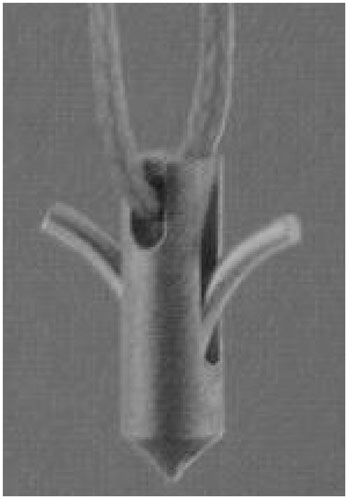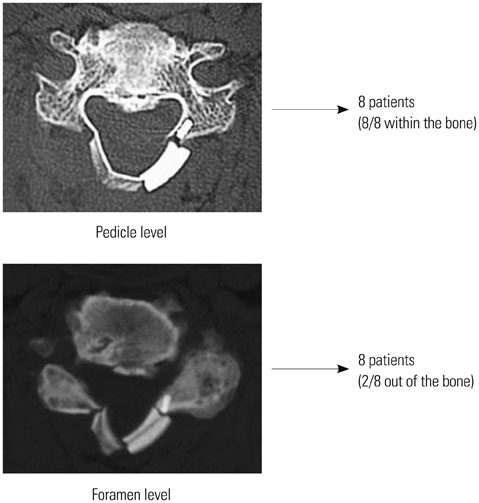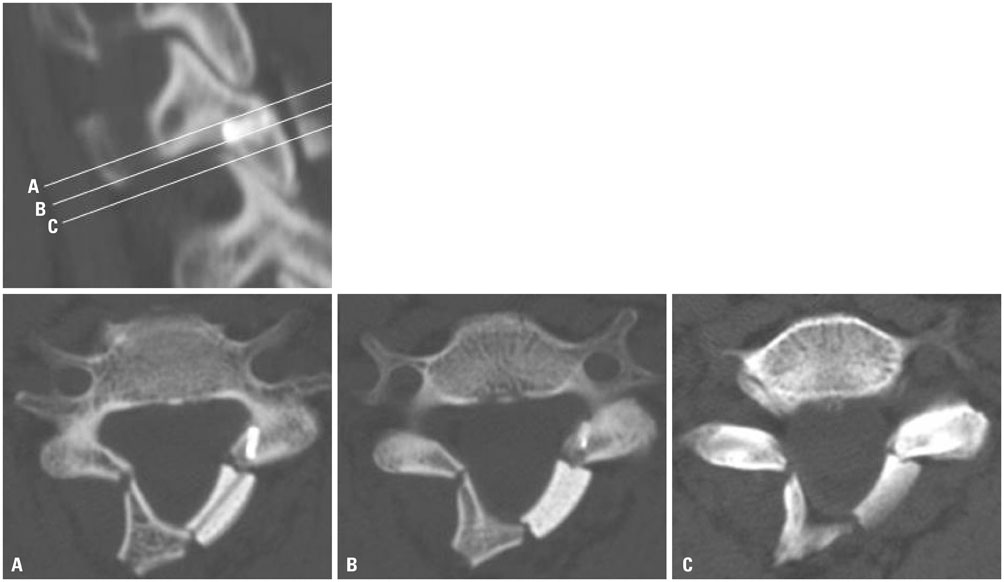Yonsei Med J.
2015 Nov;56(6):1651-1655. 10.3349/ymj.2015.56.6.1651.
Modified Open-Door Laminoplasty Using a Ceramic Spacer and Suture Fixation for Cervical Myelopathy
- Affiliations
-
- 1Department of Orthopedic Surgery, Graduate School of Medicine, Teikyo Chiba Medical Center, Ichihara, Japan. tomokun@wg7.so-net.ne.jp
- 2Teikyo University School of Medicine, Teikyo University Hospital, Mizonokuchi, Japan.
- 3Katsuura Orthopeadic Clinic, Katsuura, Japan.
- 4Department of Orthopedic Surgery, Graduate School of Medicine, Chiba University, Chiba, Japan.
- 5Department of Orthopedic Surgery, Kitazato University Hospital, Sagamihara, Japan.
- 6Department of Orthopedic Surgery, Sanmu Medical Center, Sanmu, Japan.
- 7Department of Orthopedic Surgery, Showa University School of Medicine, Tokyo, Japan.
- KMID: 2345896
- DOI: http://doi.org/10.3349/ymj.2015.56.6.1651
Abstract
- PURPOSE
To introduce a new simple technique using suture anchors and ceramic spacers to stabilize the elevated laminae in open-door cervical laminoplasty. Although ceramic spacers were placed in the opened laminae and fixed with nylon threads in this series, it was occasionally difficult to fix the nylon threads to the lateral mass.
MATERIALS AND METHODS
Study 1: A preliminary study was conducted using a suture anchor system. Sixteen consecutive patients who underwent surgery for cervical myelopathy were prospectively examined. Study 2: The second study was performed prospectively to evaluate the feasibility of this new technique based on the result of the preliminary study. Clinical outcomes were examined in 45 consecutive patients [cervical spondylotic myelopathy (CSM)] and 43 consecutive patients (OPLL). The Japanese Orthopedic Association scoring system (JOA score), axial neck pain, and radiological findings were analyzed.
RESULTS
1) In one case, re-operation was necessary due to dislodgement of the ceramic spacer following rupture of the thread. 2) In all patients, postoperative CT scans showed that the anchors were securely inserted into the bone. In the CSM group, the average JOA score improved from 9.5 points preoperatively to 13.3 at follow-up (recovery 51%). In the OPLL group, the average JOA score improved from 10.1 (5-14) points preoperatively to 14.4 (11-16) at follow-up (recovery 62%). There were no serious complications.
CONCLUSION
The use of the suture anchor system made it unnecessary to create a hole in the lateral mass and enabled reliable and faster fixation of the HA spacers in open-door laminoplasty.
MeSH Terms
Figure
Reference
-
1. Toyone T, Ozawa T, Inada K, Shiboi R, Kamikawa K, Watanabe A, et al. Surgical strategy for cervical spondylotic myelopathy: minimizing postoperative laminoplasty problems. J Japan Spine Res Soc. 2009; 20:626–630.2. Itoh T, Tsuji H. Technical improvements and results of laminoplasty for compressive myelopathy in the cervical spine. Spine (Phila Pa 1976). 1985; 10:729–736.3. Itoh T. [Clinical studies on the significance of en bloc laminoplasty for cervical compressive myelopathy]. Nihon Seikeigeka Gakkai Zasshi. 1986; 60:1109–1123.4. Chen HC, Chang MC, Yu WK, Wang ST, Liu CL, Chen TH. Lateral mass anchoring screws for cervical laminoplasty: preliminary report of a novel technique. J Spinal Disord Tech. 2008; 21:387–392.5. Kawaguchi Y, Matsui H, Ishihara H, Gejo R, Yoshino O. Axial symptoms after en bloc cervical laminoplasty. J Spinal Disord. 1999; 12:392–395.
Article6. Kawaguchi Y, Kanamori M, Ishiara H, Nobukiyo M, Seki S, Kimura T. Preventive measures for axial symptoms following cervical laminoplasty. J Spinal Disord Tech. 2003; 16:497–501.
Article7. Kawai S, Sunago K, Doi K, Saika M, Taguchi T. Cervical laminoplasty (Hattori's method). Procedure and follow-up results. Spine (Phila Pa 1976). 1988; 13:1245–1250.8. Kimura I, Shingu H, Nasu Y. Long-term follow-up of cervical spondylotic myelopathy treated by canal-expansive laminoplasty. J Bone Joint Surg Br. 1995; 77:956–961.9. Yang SC, Niu CC, Chen WJ, Wu CH, Yu SW. Open-door laminoplasty for multilevel cervical spondylotic myelopathy: good outcome in 12 patients using suture anchor fixation. Acta Orthop. 2008; 79:62–66.10. Yang SC, Yu SW, Tu YK, Niu CC, Chen LH, Chen WJ. Open-door laminoplasty with suture anchor fixation for cervical myelopathy in ossification of the posterior longitudinal ligament. J Spinal Disord Tech. 2007; 20:492–498.
Article11. Khan SN, Edmonds EW, Titelman RM, Gupta MC. Using suture anchors for cervical laminoplasty: a reliable, safe, and simple technique. Am J Orthop (Belle Mead NJ). 2008; 37:400–402.12. Yu HL, Xiang LB, Liu J, Chen Y, Yu M, Cao Y. Laminoplasty using Twinfix suture anchors to maintain cervical canal expansion. Eur Spine J. 2010; 19:1795–1798.
Article13. Kurokawa Y, Yokoyama Y, Kuroda K, Koruprolu S, Paller D, Nakano A, et al. Biomechanical evaluation of the suture anchors used in open-door laminoplasty: a cadaveric study. Spine (Phila Pa 1976). 2014; 39:E1248–E1255.14. Hu W, Shen X, Sun T, Zhang X, Cui Z, Wan J. Laminar reclosure after single open-door laminoplasty using titanium miniplates versus suture anchors. Orthopedics. 2014; 37:e71–e78.
Article15. Zeng Y, Xiong M, Yu H, He N, Wang Z, Liu Z, et al. [Comparative study on microplate and anchor fixation in open-door cervical expansive laminoplasty]. Zhongguo Xiu Fu Chong Jian Wai Ke Za Zhi. 2011; 25:946–950.16. Matsumoto M, Watanabe K, Hosogane N, Tsuji T, Ishii K, Nakamura M, et al. Impact of lamina closure on long-term outcomes of open-door laminoplasty in patients with cervical myelopathy: minimum 5-year follow-up study. Spine (Phila Pa 1976). 2012; 37:1288–1291.
Article
- Full Text Links
- Actions
-
Cited
- CITED
-
- Close
- Share
- Similar articles
-
- Changes in Cervical Spine Range of Motion after Laminoplasty in Cervical Spondylotic Myelopathy
- Technical Modification and Comparison of Results with Hirabayashi's Open-door Laminoplasty
- Comparison of Midline Splitting versus Unilateral Open Door Laminoplasty and Its Impact on Patient Outcomes
- Comparison of Early Surgical Outcome between Unilateral Open-Door Laminoplasty and Midline Splitting Laminoplasty
- Original Surgical Treatment and Long-term Follow-up for Chronic Inflammatory Demyelinating Polyradiculoneuropathy Causing a Compressive Cervical Myelopathy: Review of the Literature






